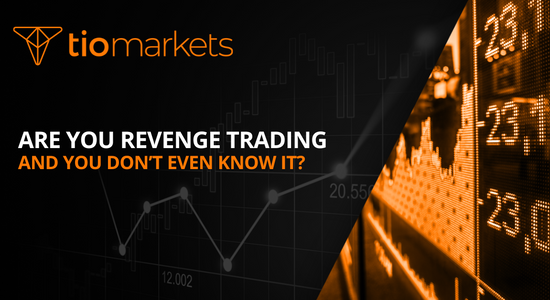How to Use Bollinger Bands in Position Trading?
BY TIO Staff
|Jun 20, 2024Bollinger Bands are a powerful technical analysis tool invented by John Bollinger in the 1980s. They have since become a staple among traders looking to gauge market volatility and potential price movements. This article delves into the intricacies of using Bollinger Bands in position trading, offering a comprehensive guide to maximize your trading strategies in the volatile world of cryptocurrency.
Understanding Bollinger Bands
Bollinger Bands consist of three lines: the middle band, which is a simple moving average (SMA) of the closing prices; and two outer bands that are standard deviations away from the middle band. This simple yet effective setup provides a wealth of information about market conditions.
Components of Bollinger Bands
The middle band typically uses a 20-period moving average, serving as a base for the upper and lower bands. The outer bands adjust themselves based on market volatility, widening during periods of high volatility and contracting during quieter times. This dynamic nature of Bollinger Bands makes them particularly useful for traders looking to capitalize on fluctuating market conditions.
Significance of Band Width
The width of the bands is a direct measure of market volatility. Narrow bands suggest low volatility and can often precede significant price movements, as markets tend to move from periods of low volatility to high volatility. Conversely, wide bands indicate that the market is currently experiencing high volatility.
Applying Bollinger Bands in Position Trading
Position trading is a strategy that involves holding positions for an extended period, ranging from several weeks to months or even years. Bollinger Bands can be an invaluable tool in identifying entry and exit points for long-term trades, especially in the unpredictable crypto market.
Identifying Trend Reversals
One of the primary uses of Bollinger Bands in position trading is to identify potential trend reversals. When the price of a cryptocurrency touches or breaches the upper or lower band, it could indicate that the market is overextended and a reversal is imminent. Traders might consider this an opportunity to enter or exit a position, depending on their analysis of the market direction.
Moreover, it's essential to combine Bollinger Bands with other technical indicators to confirm potential trend reversals. For example, traders often look for divergence between price and momentum indicators like the Relative Strength Index (RSI) when considering a trade based on Bollinger Bands signals. This additional confirmation can increase the probability of successful trades.
Spotting Breakouts
Breakouts occur when the price moves outside the bands and can signify the start of a new trend. For position traders, identifying a valid breakout is crucial as it can lead to significant price movements. A common strategy is to look for a consolidation period where the bands contract, followed by a sharp price movement that breaks through the bands, signaling a potential entry point for a long-term position.
When looking for breakouts, traders should also pay attention to volume patterns. A breakout accompanied by high trading volume is considered more reliable as it indicates strong market participation and conviction behind the price movement. This volume confirmation can help traders differentiate between false breakouts and genuine trend changes.
Risk Management with Bollinger Bands
While Bollinger Bands can provide valuable signals, they should not be used in isolation. Combining them with other technical indicators and a solid risk management strategy is essential to mitigate potential losses.
Setting Stop-Loss Orders
A prudent approach to using Bollinger Bands in position trading involves setting stop-loss orders to protect against market reversals. For instance, a trader might set a stop-loss order just below the lower band for a long position, minimizing potential losses if the market moves against their position.
Additionally, traders can utilize trailing stop-loss orders to lock in profits as the trade moves in their favor. By adjusting the stop-loss level based on the price movement, traders can secure gains while allowing the trade to continue running in a profitable direction. This dynamic approach to stop-loss management can help traders maximize their returns while effectively managing risk.
Adjusting Positions Based on Volatility
Traders can also use the information provided by the band width to adjust their position sizes. In periods of high volatility, reducing position size can help manage risk, while in times of low volatility, increasing position size might be warranted to maximize potential gains.
Utilizing Bollinger Band Squeeze
In addition to trend reversals and breakouts, traders can take advantage of a Bollinger Band squeeze, which occurs when the bands contract tightly due to low volatility. This squeeze often precedes a significant price movement, signaling a period of potential increased volatility and trading opportunities.
During a Bollinger Band squeeze, traders can prepare for a potential breakout by setting entry orders above the upper band and below the lower band. Once the price breaks out of the squeeze, traders can capitalize on the momentum of the new trend. It's crucial to combine this strategy with proper risk management techniques to avoid false breakouts that can lead to losses.
Conclusion
Bollinger Bands are a versatile tool that can enhance position trading strategies, especially in the volatile cryptocurrency market. By providing insights into market volatility and potential price movements, they allow traders to make informed decisions about entry and exit points. However, it's crucial to use them as part of a comprehensive trading plan that includes other technical indicators and sound risk management practices. With the right approach, Bollinger Bands can be a valuable asset in any trader's toolkit.
Remember, the key to successful trading lies not just in the tools you use but in your understanding of the market dynamics and your ability to adapt to changing conditions. Bollinger Bands, when used wisely, can help you navigate the complexities of the market and achieve your trading objectives.
Start Trading with Bollinger Bands on TIOmarkets
Ready to put Bollinger Bands to the test in your position trading strategy? Join TIOmarkets, the top-rated forex broker, and access a world of trading opportunities across Forex, indices, stocks, commodities, and futures markets. With over 170,000 accounts opened in more than 170 countries, we provide you with the tools to trade over 300 instruments in 5 markets, all with low fees. Enhance your trading skills with our comprehensive suite of educational resources and step-by-step guides. Create a Trading Account today and start navigating the market with confidence.

Risk Disclaimer - of Liability: The authors, publishers, and distributors of this article are not responsible for any losses, damages, or liabilities that may arise from the use of the information contained herein. Readers are encouraged to seek professional advice from a qualified financial advisor before engaging in any trading activities.
By accessing this article, you acknowledge and agree that you are fully responsible for your trading decisions and any resulting outcomes. Always conduct thorough research and consider your financial situation, risk tolerance, and investment objectives before making any trading decisions.
Join us on social media

Behind every blog post lies the combined experience of the people working at TIOmarkets. We are a team of dedicated industry professionals and financial markets enthusiasts committed to providing you with trading education and financial markets commentary. Our goal is to help empower you with the knowledge you need to trade in the markets effectively.
Related Posts
undefined



